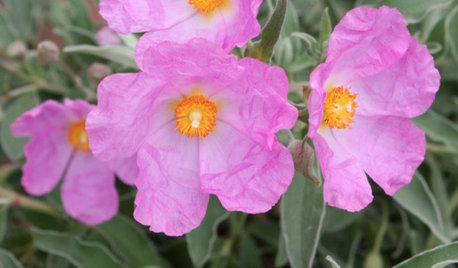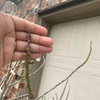cistus ladanifer
juliaw
18 years ago
Related Stories

GARDENING GUIDESGreat Design Plant: Rockrose
Dry summer heat and poor soil won't quell the profuse papery blossoms of rockrose, a low-maintenance champion
Full StoryI've been doing some research on this species and I'd really like to try it, but I've read that it (and its various varieties and cultivars) can reach 6-8' in height.
Is there anyone here with experience growing these? If so, are the maximum height estimates spot-on or worse case scenario? Is it possible to tip-pinch or prune for lower bushiness, or will that ruin the plant's shape and reduce flowering?
I've seen mention of hybrids and low-growing cultivars, but none so far have mentioned if these other plants have the same strongly aromatic gum as the original.
Thanks for any help!


Ron_B
juliawOriginal Author
Related Professionals
Graham Landscape Architects & Landscape Designers · Mountain Brook Landscape Architects & Landscape Designers · North New Hyde Park Landscape Architects & Landscape Designers · Tomball Landscape Architects & Landscape Designers · Willowick Landscape Architects & Landscape Designers · Buford Landscape Contractors · Cupertino Landscape Contractors · Gloucester Landscape Contractors · Hoover Landscape Contractors · Lakewood Landscape Contractors · Saint Paul Landscape Contractors · Welby Landscape Contractors · West Chester Landscape Contractors · Raytown Landscape Contractors · West Palm Beach Swimming Pool BuildersRon_B
Bob (Seattle, Zone 8a)